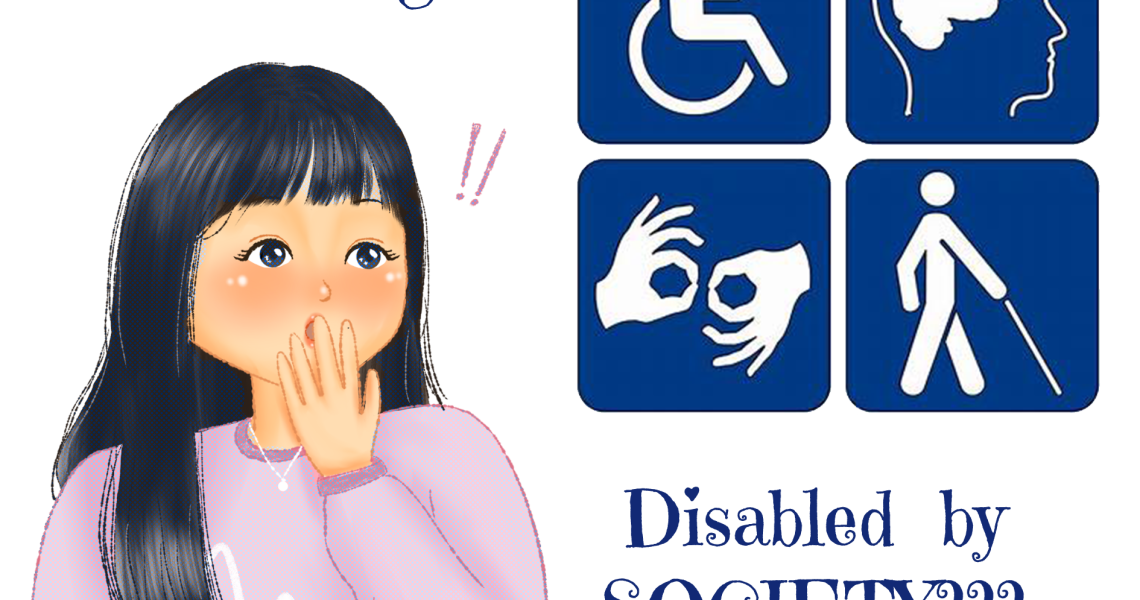DISABILITY label is a grievous misdemeanour against freedom of living a normal life
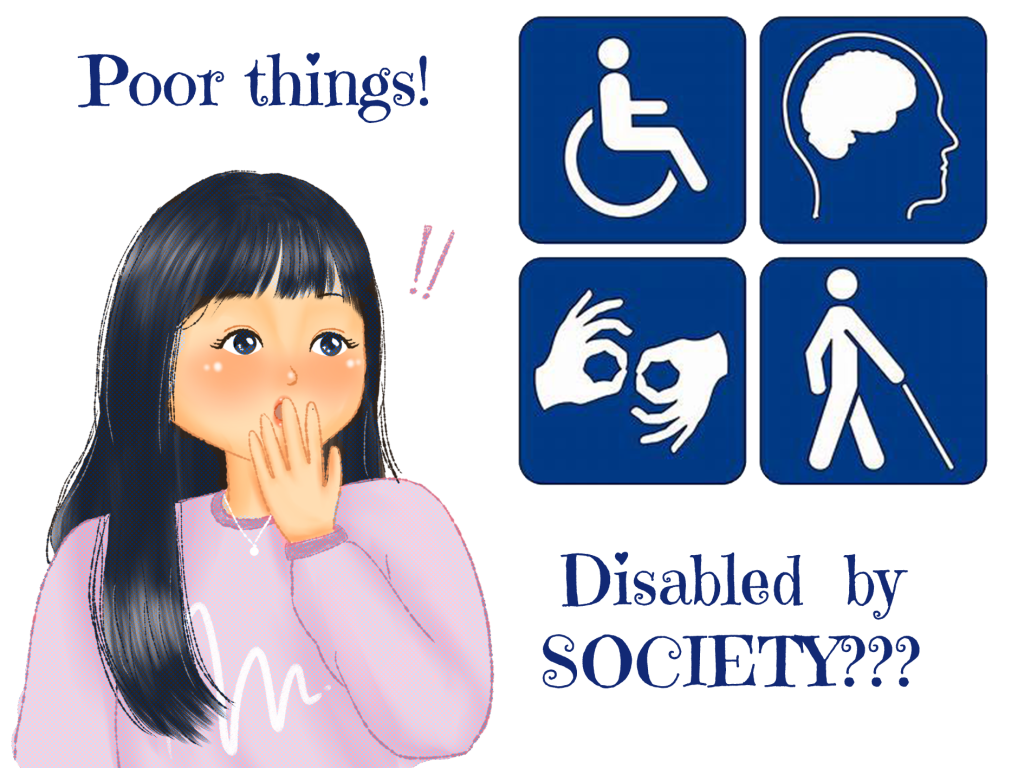
“Hey mum can you give me the blind man’s phone number?” “Sorry son, I don’t know any blind men.”
“I mean the man who makes blinds to cover the windows.” “Oh, yes sure. Here it is.”
A crucial requirement of grasping the needs of another human being is to understand their life circumstances and experiences. Sometimes conceptual frameworks are used in an attempt to sense some of the universal or common characteristics of the experiences of others and it is frequent that people with a physical or functional impairment are assigned a low status and social value in society. This leads to being considered as poor and powerless, socially less important, and less valuable than other members of society and consequentially effects the manner others in society view and treat such people.
What is lost is valued lives. Capacity in the community is belittled and reinstated into the insatiable institutional service system.
Themes that place a claim of physical and social rejection through the use of institutions such as ‘The Disabled’ contribute to increased vulnerability, as does the denial of the power imbalance within the human services system and the illusion of loss of control over different aspects of one’s life.
There are many different kinds of visible and invisible ‘disability’ types which could have been the result of accidents, or illness, or genetic disorders, or aging. The Australian Government Department of Social Securities in 2023 reported ABS statistics of 2018 saying over 4,400,000 Australians have some form of disability. 17.7% of the Australian population. The number of people with disability reported is down from 18.3% in 2015.
5.7% of all Australians in 2018 were classified as having a profound or severe disability. That is 1,435,271 real life individual people.
People with a profound or severe disability are defined by the Australian Bureau of Statistics as those people needing help or assistance in one or more of the three core activity areas of self-care, mobility and communication. Added are people because of a ‘disabling’ health condition lasting six months or more, or old age.
Of the 4,400,000 Australians 1,900,000 were said to be over the age of 65 years. 30,000 were said to be deaf, 20,000 were said to use a wheelchair, 357,000 were said to be blind or have low vision, approximately 1,000,000 of people with ‘disability’ reported musculoskeletal disorder, 430,000 reported arthritis and similar, and 426,000 reported back problems. About 615,000 had a severe mental disorder which includes psychotic disorders and severe and disabling forms of depression and anxiety. Another 1,200,000 had moderate mental disorders.
In June 2018, about a 34% of people in receipt of the Disability Support Pension had a primary medical condition of ‘psychological/psychiatric’ diagnosis. It was reported that about 12.0% of people with a 12-month mental disorder also reported a ‘comorbidity’ physical condition, with 1 in 20 reporting 2 or more physical conditions. Of these many report heart or circulatory or diabetes. Diabetes is said to be seen in three times more people with people living with psychotic illness than the rate seen in the general population. Epilepsy, severe headaches/migraines are also commonly seen comorbidity amongst this sector of the population.
The average life expectancy in Australia in 2020 was 83.20 years. Only two people out of 10 over the age of 90 are reported not have any ‘disability’.
Grasping ‘disability rights’ is like boiling water, right? The academic and political world is agreed on what to lecture and report on to accomplish what is required.
Let us not forget that without heat being applied water does not boil.
A truth was revealed during the process through the Royal Commission into violence, abuse, neglect, and exploitation of ‘People with Disability’. The process was not about improving the lives of people living with ‘disability’. The process was akin to a sketch from Yes Prime Minister, the people do not need to know the truth because the job is to get a ‘model of disability’ approved by the government so then Human Rights laws will cement the sacred cow… the academic ‘social model of disability’ into our society. And once it is implemented into societal Human Rights law? What comes next? No real change.
Humiliation means to make someone feel ashamed or stupid or losing respect for oneself. Public humiliation can be petrifying, causing a person to abandon their interests or stop pursuing ambitions or justice for wrong doings.
The law will decide who in society is ‘disabled’ by society and people will identify as being a person with societal ‘disability’. Great!
‘Disabled by society not by our bodies.’ Rigid dichotomy.
A social group oppressed by society. A black and white view of the world. A simplistic political strategy to dismantle disabling barriers is an ideology which is not seen to be easily challenged. But the mismatched information has to be before it is too late. Rather than conform to social model orthodoxy it is time to re-examine the rhetoric and speak more honestly.
The implementation of a legislative framework that started in 1976 with the United Nations proclaiming 1981 as the International Year of the ‘Disabled’ Persons continues… A plan of action at national, regional, and international levels was called for. A plan to equalise opportunities, rehabilitate and prevent social ‘disability’. And here we are nearly 50 years later and what has essentially changed? Disabled by society modelling and plan awareness!
The noise is seen and read but not actually heard. A deafness exists. The struggle continues as governments pass a law here, a law there, but until society’s attitude changes those laws will not fix much. The skirmish is all about the plan and zippo about the execution.
Legislation, plans, compliance. Call them any name, with or without the word ‘Disability’ in the heading, Access and inclusion plans make a statement. A wicked one at that. Does the reader have any concept that being baptised ‘disabled’ is crippling and instils a refutation reaction. Being accepted for who one is, as a unique individual in the ‘normal’ crowd, is exposed as a total illusion.
“Our Accessibility and Inclusion plan for the one in five Australians identifying as a person with a ‘disability’.” “’Disability’ increases with age.” “Many people associate the ‘disabled’ with someone who is in a wheelchair, or who is blind or deaf. They have the attitude that people with a disability are totally different and therefore need to be treated differently. Unfortunately, this kind of stereotyping is in itself a form of discrimination.” “A Handicap is a physical or attitudinal constraint imposed on a person regardless of whether or not that person has a disability.” “Over the next five years, the whole community will benefit from the implementation of the Plan as we move from an ‘access’ to an ‘inclusion’ focus.” “Many people living with disability experience a lack of inclusion rather than a lack of access.”
A pattern of language and mindset has developed around the ‘disability’ story and great big top-heavy institutional industry has been created using the wrong foundations. Mismatched information is not being fairly analysed.
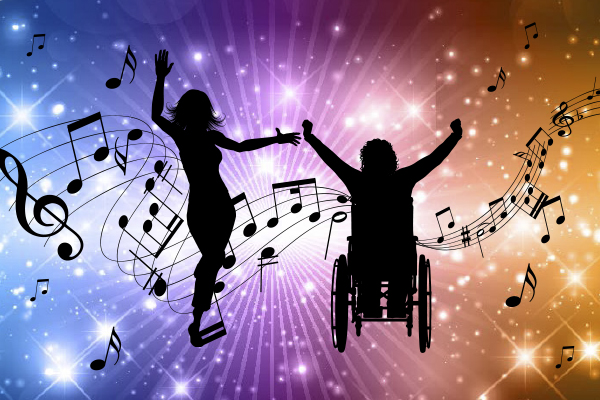
At its simplest, music is a language, with rules. The symbols on the pages of sheet music have been used for hundreds of years. They represent the pitch, speed, and rhythm of the composition they express.
For normal hearing, sound waves travel through the ear canal before reaching the eardrum and the tiny bones of the middle ear. The sound waves are then converted into electrical signals in the inner ear and transmitted to the brain via the auditory nerve.
Only a small percentage of the Australian population are severely or profoundly deaf with a million or so more having some form of hearing loss typically associated with the aging process.
Hearing difficulty is vastly individualised, from the degree and type of hearing loss to the shape of the ear, there is no one-size-fits-all solution. There is no medical cure for sensorineural deafness.
Lip reading or sign language may help although one needs to be able to see peoples’ lips and sign language has around 130 worldwide varieties. Auslan, Australia’s version of sign language is used by about 6500 deaf people. Pencil and pad and subtitles can be useful communication tools. Hearing aids, cochlear implants, assistive listening devices, or other medical technology might assist.
Imagine beautiful music being played or birds chirping in the garden with no way of hearing it. As a person loses their hearing they can become more introverted, and quiet, less engaged and avoid social gatherings as they simply give up on listening as it is too hard. A new normal in living life begins.
Ludwig van Beethoven is one of the most talented composers of classical and romantic music our world has experienced to date.
Born in Germany into a musical family on an unknown day in December 1770, Ludwig Van Beethoven, had heard and played music for the first three decades of his life, thus he distinguished how instruments and voices sounded and how they functioned together.
Ludwig was taught the viola by his grandfather, he also played the piano and violin. As a freelance musician Ludwig made his name and earned his income by showcasing his talents as a pianist and he composed, played and conducted music.
For an unknown reason during his mid twenties Ludwig’s hearing drastically faded. Over three years he avoided almost all social gatherings because it was impossible for him to say to people “I am deaf”. If Beethoven had belonged to any other profession it may have been easier, but as a classical music composer and performer he thought it was a frightful state to be in. He could hear the sounds, but not the words. When he played or composed his affliction hampered him less. He gradually began to accept that his deafness was progressive and in reality incurable.
Ludwig understood people saw him as hostile, stubborn and unsociable. Even as having a dislike of people. He knew they were wrong as he knew himself to be a man born with a lively fiery temperament inclined to harbour gentle feelings of goodwill and he was on a mission to accomplish great feats.
Ludwig enjoyed his own company. He had an innate preference to spend time alone reflecting on what mattered to him and his music.
In his own words, in a letter he wrote, but never sent to his two younger brothers he said “for the last six years an incurable condition has seized me, worsened by senseless physicians, cheated from year to year in the hope of improvement, finally compelled to the prospect of a lasting ailment”.
The young, successful composer and performer had to admit that he was suffering from a chronic, incurable sensory fading with which he would need to accept to continue on with life. He fell into a deep depression and contemplated suicide. Over time he turned to alcohol to mask his pain and sorrow. His death included complications due to liver failure.
Because of Ludwig’s deafness he felt he was misunderstood and therefore wise to keep to himself, to live his life in solitude. He was sad due to his physical sensory impairment. He was repulsed by the thought of having to say to people “speak louder”, “shout because I am deaf”. He was embarrassed and humiliated that as a successful composer and musician he had a weakness of facility which he thought should be more perfect in him than in others. He silently sought forgiveness for being diverse in human performance, his deafness caused him to not be able to engage in civil conversations in which it is normal to speak in unrestrained and heartfelt ways. So he isolated himself from society only entering when necessity insisted.
Even though he had an urge for society Ludwig banished himself to a world of solitude because if he approached company he would have physical reactions of ‘hot anxiety’ caused by a fear of letting his condition be noticed by other people. He was mortified at the thought of standing next to someone who could hear a flute playing or a shepherd’s song from afar that he could not hear.
Although he contemplated taking his own life it was music that held him from doing so. Ludwig wrote “it seemed impossible to me that I should leave the world before I had produced all that I felt I might, and so I spared this wretched life, truly wretched; a body so susceptible that a somewhat rapid change can take me from best condition to the worst”.
In his 28th year with patience as his guide through his hard destiny Ludwig bit the bullet and decided that in-spite of being wronged and as an unhappy man he would console himself and despite his ‘nature’s impediment’ he would do what was in his power to be admitted into the ranks of worthy musical artists and men. He spoke of joy as he hastened towards his death, whenever that would be, near or far, as it gave him a level of freedom from an endless suffering state.
Over the next 15 years Beethoven’s hearing continued to slowly worsen until at age 46 he was deaf, and he communicated with people by passing written notes back and forth.
Beethoven’s loss of hearing did not prevent him from composing music, but it made playing at concerts, an important source of income increasingly difficult. The brain is an incredibly adaptable body organ. Beethoven continuously imagined in his mind what his compositions would sound like.
Some say Beethoven’s best classical music was composed during the latter years of his life when he was deaf, he could sit at his desk and compose a piece of music without hearing a sound. Beethoven sawed the legs off his piano and lying with his ear to the wooden floorboard he used the floor as a sounding board. When he faced his audience, he could see the ovation, but Beethoven could not hear the rapturous applause.
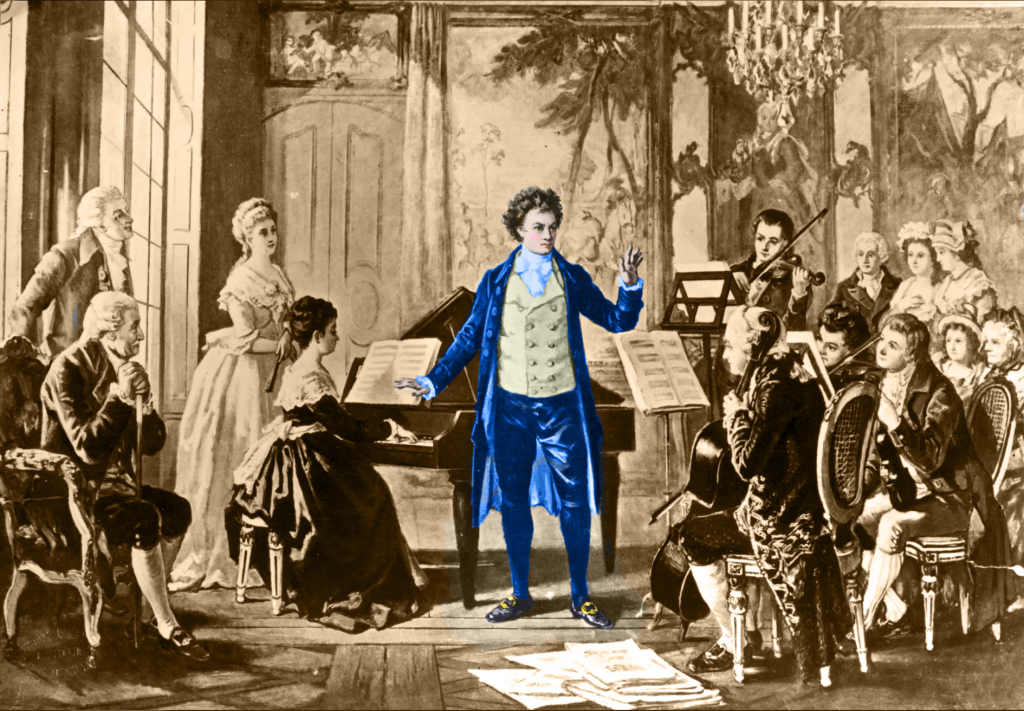
Ludwig van Beethoven was a master of the language of music, a composer, which is about the creation of sound, not about listening.
Deaf people are able to sense vibrations in the same part of the brain that non-deaf people use for hearing, this means that the experience deaf people have when ‘feeling’ music can be similar to the experience non-deaf people have when hearing music.
The radio maybe a useless and unwanted piece of equipment for a person who is completely deaf. Someone who cannot hear can turn the dials, see the on light, maybe even appreciate the artistic structural design of a radio, but they cannot hear any music or conversations being relayed.
While words converted to text by speech recognition software to be read in print allows a deaf person to engage with a radio program the application does not make the radio accessible rather it allows access to radio programs for a person who cannot hear.
One may read the lyrics of a song or sheet music, but one cannot see music. One hears and feels the vibration of music coming from sound waves. Feeling sound, instead of hearing sound, is a form of sensory substitution. A matching principle of sensory substitution is at work when people who are blind use their sense of touch to read Braille.
Deaf people do not actually listen to music in the literal sense. The way that they experience music is different from the way people who are not deaf experience music, but they can still enjoy music in a full capacity. One who has been to a rock concert or stood barefoot in front of a loudspeaker, will have experienced the sound waves vibrating through their body. This is how deaf people can eavesdrop the music.
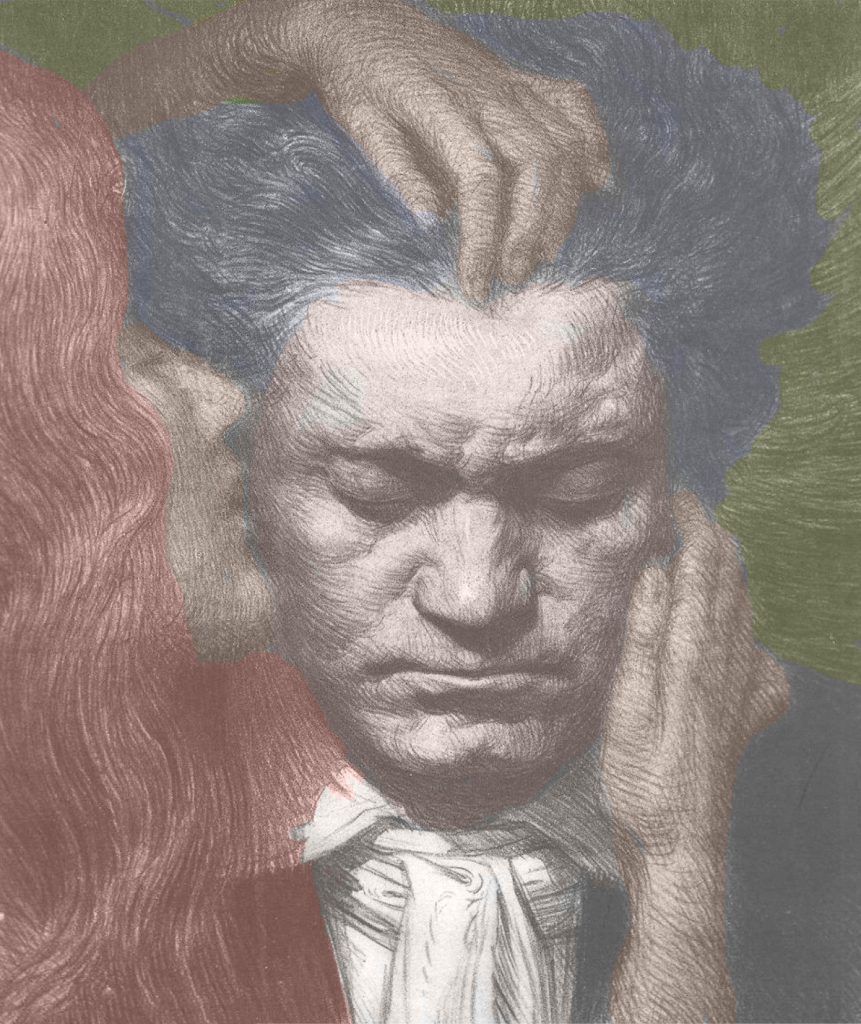
In larger music venues where the vibrations are more dispersed it is harder to experience music this way. Sign language interpreters if placed in the line of sight of a deaf person and an artist can help to translate the words of songs being sung and enhance the concert experience but this is not an example of freedom giving equipment like a vesture system can be.
A vesture system which includes a torso harness, two wristbands, and two ankle bands, constructs several areas of vibration that converts music into vibrations through the integration of hardware, software. The vestures, and wireless communication is an example of freedom from deafness equipment.
Hearing aids amplify sounds so they may be detected by damaged ears and cochlear implant hearing is different from normal hearing and takes time to learn or relearn. These medical instruments maybe freedom from deafness giving equipment.
People who cannot hear are deaf. This is their normal and an inclusive society will encourage them to live their normal life without having to declare to society they are ‘disabled’ to be accepted and receive freedom from deafness equipment.
Freedom from deafness need not be a wish and a hope and a dream to be released from a chaotic and out of balance society.
The power to change the rhetoric comes from the courage of personal power and leadership focusing on a safe and secure place to use wild imagination in the creation of new freedom giving inventions. A place full of adventure wanting to travel and explore a new dawn of creation.
